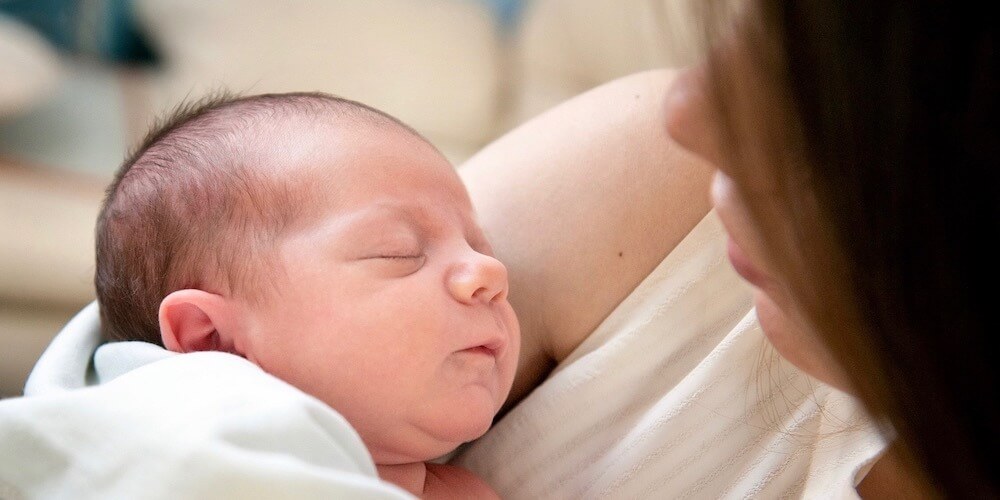Important Differences Between Baby Blues and Postpartum Depression

In the days and weeks after giving birth, many new moms are surprised to find themselves feeling opposite what they expected. Instead of feeling joyful, they find themselves feeling scared, tearful, and vulnerable. In addition to navigating the demanding needs of their newborn, new mothers are hit with drastic hormonal changes that likely contribute to what is known colloquially as the “baby blues.” Up to 4 in 5 new parents, or 80% of new parents, experience the baby blues.
It’s important to understand the differences between the baby blues and postpartum depression (PPD). Recognizing the signs and seeking appropriate mental health support can significantly impact a mother’s recovery and overall well-being.
What are the baby blues?
The baby blues refer to a temporary period of emotional distress that many new mothers experience within the first few days after giving birth. These mood swings are primarily caused by the hormonal changes that occur postpartum.
Symptoms of baby blues
- Feeling sad
- Crying spells
- Loss of appetite
- Mood swings
- Anxiety
- Irritability
- Trouble sleeping
- Feeling overwhelmed
- A sense of emotional vulnerability
The baby blues typically begin a few days after childbirth and may last up to two weeks.
What is postpartum depression?
Postpartum depression (PPD) is a severe and prolonged form of depression that can occur after childbirth. 1 in 8 new mothers report experiencing symptoms of postpartum depression in the year after childbirth. Unlike the baby blues, which tends to pass relatively quickly, postpartum depression can persist for weeks, months, or longer if left untreated. It can significantly impact a mother’s ability to function and bond with her baby.
Symptoms of postpartum depression
- Persistent feelings of sadness, hopelessness, or emptiness
- Intense irritability or anger
- Poor concentration
- Severe mood swings
- Excessive crying
- Trouble bonding with the baby
- Withdrawing from loved ones
- Loss of interest in activities
- Changes in appetite or sleep patterns
- Insomnia
- Guilt
- Thoughts of harming oneself or the baby
What causes postpartum depression?
While the exact cause of postpartum depression is not fully understood, it is believed to be a combination of hormonal, emotional, and physical changes. Some contributing factors include:
- Hormonal changes: After childbirth, estrogen and progesterone levels drop significantly, which can trigger mood changes. Levels of thyroid hormone may also drop after giving birth, which can cause symptoms of depression.
- Sleep deprivation: Lack of sleep can make it harder to cope with stress and emotions.
- History of depression: Women with a personal or family history of depression or anxiety are at a higher risk.
- Lack of support: Limited emotional or practical support from family and friends can increase the risk.
- Birth experience: A traumatic birth or unexpected complication can contribute to postpartum depression.
Other research findings indicate the following risk factors for the development of postpartum depression:
- Relatively younger or older age of the mother
- Cesarean delivery
- Preterm delivery
- Gestational diabetes during pregnancy
- Life stressors in the peripartum period (the time before, during, and after birth)
When to seek help for postpartum depression
If you or someone you love is experiencing signs of postpartum depression, it is crucial to seek help as soon as possible. Early intervention can significantly improve recovery outcomes. Reach out to a professional if you notice:
- Symptoms lasting longer than two weeks
- Difficulty bonding with your baby
- Persistent feelings of sadness or hopelessness
- Difficulty taking care of your baby
- Thoughts of harming yourself or your baby
Support for postpartum depression
Fortunately, postpartum depression is treatable. There are various approaches to help mothers recover including:
- Therapy: Talk therapy, such as cognitive-behavioral therapy (CBT) or interpersonal therapy (IPT), can be highly effective in treating postpartum depression. Working with a therapist can help you process your emotions, develop coping strategies, and rebuild a sense of control.

- Support systems: Building a strong support network or support system can make a significant difference during recovery. Lean on friends, family, or postpartum support groups in your area for support.
Can postpartum depression go away on its own?
While some cases of postpartum depression may improve without treatment, many mothers benefit from professional intervention. Ignoring symptoms of postpartum depression can prolong recovery and potentially worsen the condition. Seeking help early can promote a quicker and smoother recovery.
Supporting a loved one with postpartum depression
If someone you love is experiencing postpartum depression, here are some ways you can offer support:
- Listen without judgement: Let them express their feelings without offering unsolicited advice.
- Offer practical support: Assist with daily tasks, meal preparation, or baby care.
- Be patient: Recovery takes time, so continue offering support without pressure or judgement.
- Encourage professional help: Gently encourage them to talk to a therapist or healthcare provider.
Takeaway
Understanding the differences between the baby blues and postpartum depression is crucial for new mothers and their families. While the baby blues are temporary and usually resolve on their own, postpartum depression often requires professional care and support. If you or someone you know is struggling with postpartum depression, don’t hesitate to reach out for help.
Your mental health matters, and our network of therapists are here to support you. Browse postpartum depression therapists online at findmytherapist.com and schedule your first appointment directly online.
Resources:
Depression During and After Pregnancy: A Resource for Women, Their Families, and Friends from the U.S Department of Health and Human Services
Ready to prioritize your mental health?
Great Lakes Psychology Group is here to help. With an extensive network of caring therapists available to meet online or in-person, we make it easy to find the right fit for your unique needs.



